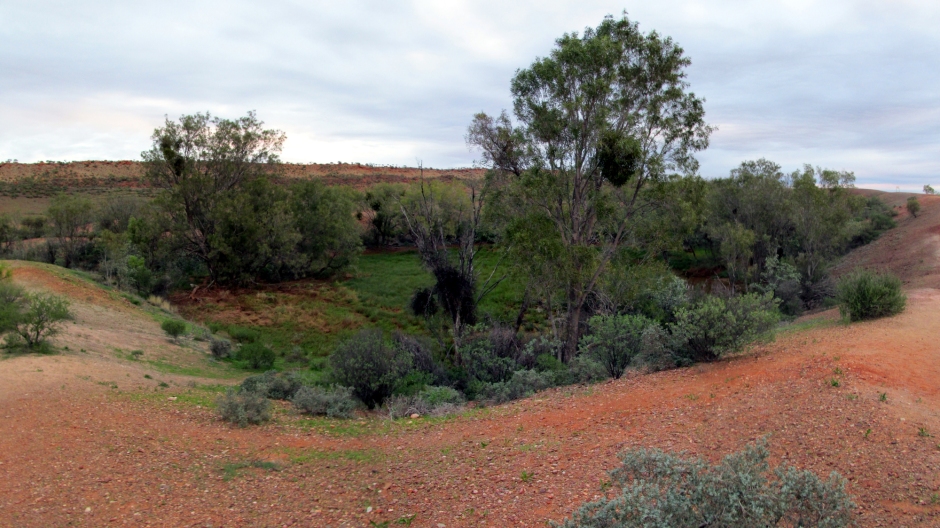Henbury Meteorites Conservation Reserve

Henbury Meteorites Conservation Reserve is located 145 kilometres south west of Alice Springs in Australia's Northern Territory. Approximately 4,700 years ago, a meteorite travelling at over 40,000km/hr broke up just before impact and hit the Earth's surface at Henbury.
 |
 |
 |
Above: Composite Images of the Main Crater at Henbury Meteorites Conservation Reserve
The site here has 12 craters caused by the meteorite which range in diameter; the largest (shown above) is 180m across and 15m deep, whilst the smallest is barely visible, measuring 6m across and only a few centimetres deep. Shock waves ran through the earth, causing sheets of rock to fold back and form the crater rims. Weathering by wind and rain over the last few thousand years has smoothed out the original sharp contours of the crater rims, to form the broad undulating mounds that can be seen today. Several tonnes of the nickel-iron alloy meteorite fragments have been recovered, and one piece which weighs 46.5kg is on display at the Spencer and Gillen Museum in Alice Springs; there are no fragments kept at Henbury itself. Astronauts from the United States visited the craters here in preparation for the Moon landings and although relatively small in size compared to some other crater sites, the Henbury craters have a complex geological structure that has given them importance in helping interpret features on planets, such as Mars.

Shown above is the Water Crater. This crater has captured the drainage of a creek that sometimes flows into it, making the soil inside it richer and wetter, allowing for grasses and Whitewood trees to grow. This in turn, attracts a wide range of native animals.
 |
 |
|
 |
 |
The site is accessed via a 5km track running from the unsealed Ernest Giles Road, 11km from where the latter meets the Stuart Highway. An informative self-guiding walk (1.5km return) takes the visitor from the car park along the perimeter of a number of the craters and for a modest fee, there are some camping sites here with places for fires provided.
 |
 |
|
 |
 |
References
1. Exploring the Stuart Highway and Oodnadatta
Track Adelaide to Darwin. Balhannah, SA: Tourist Information
Distributors Australia.
2. In situ public information boards
3.
Rawlings-Way, C., Worby, M. and Brown, L. (2013). Central Australia.
Footscray, Vic.: Lonely Planet.
4. Red Centre - Alice Springs to Uluru
(Map with visitor information). Hema Maps Pty Ltd.
Back to Top